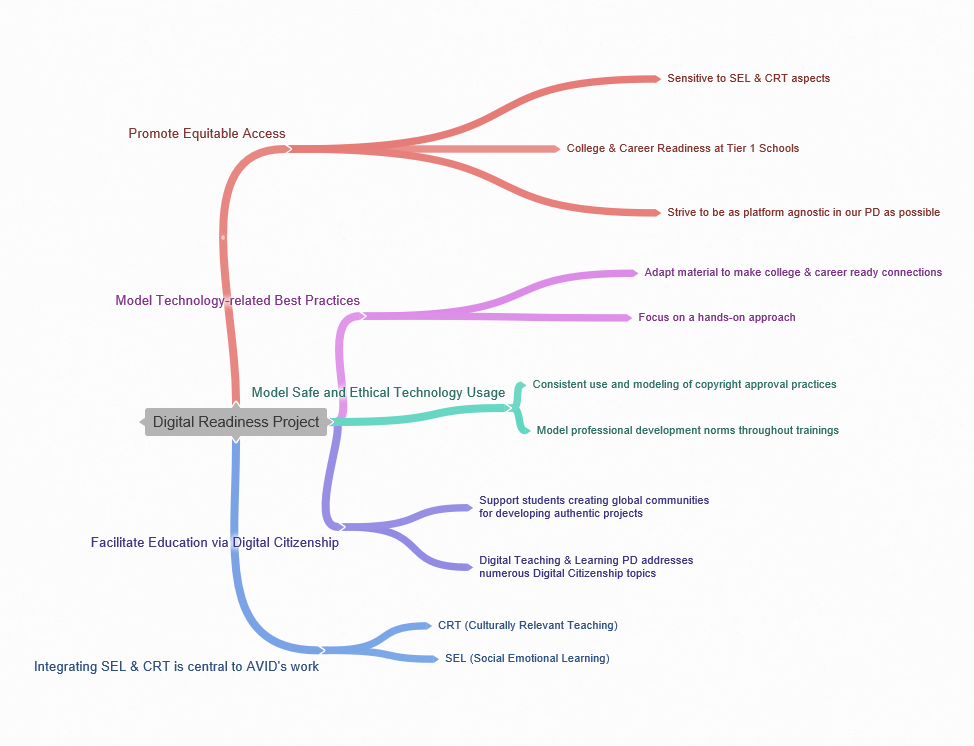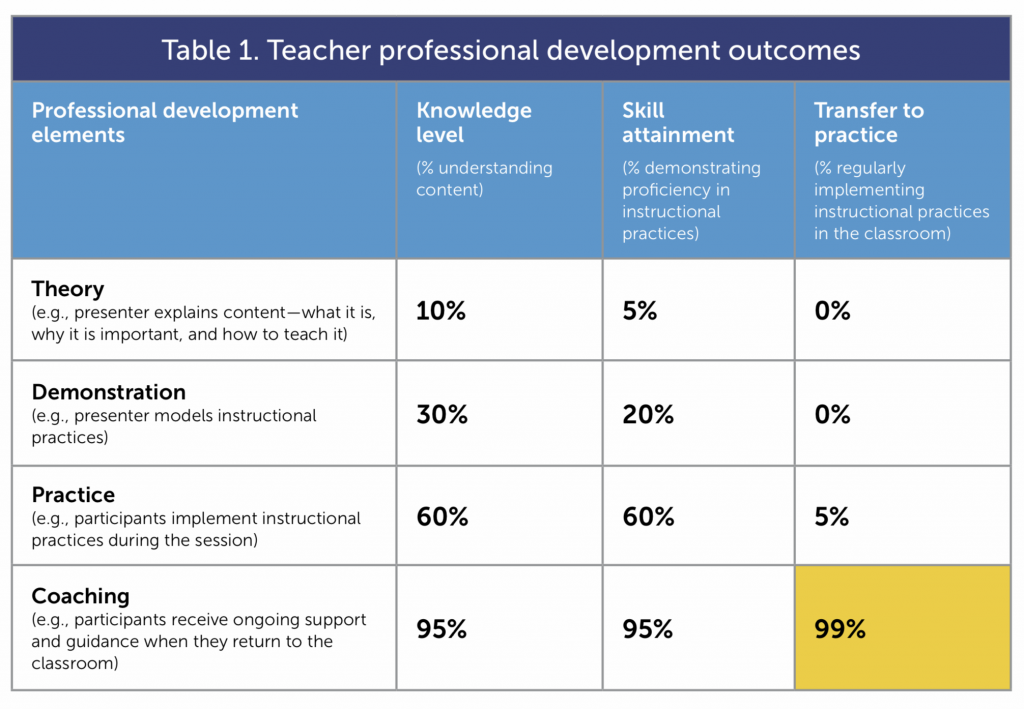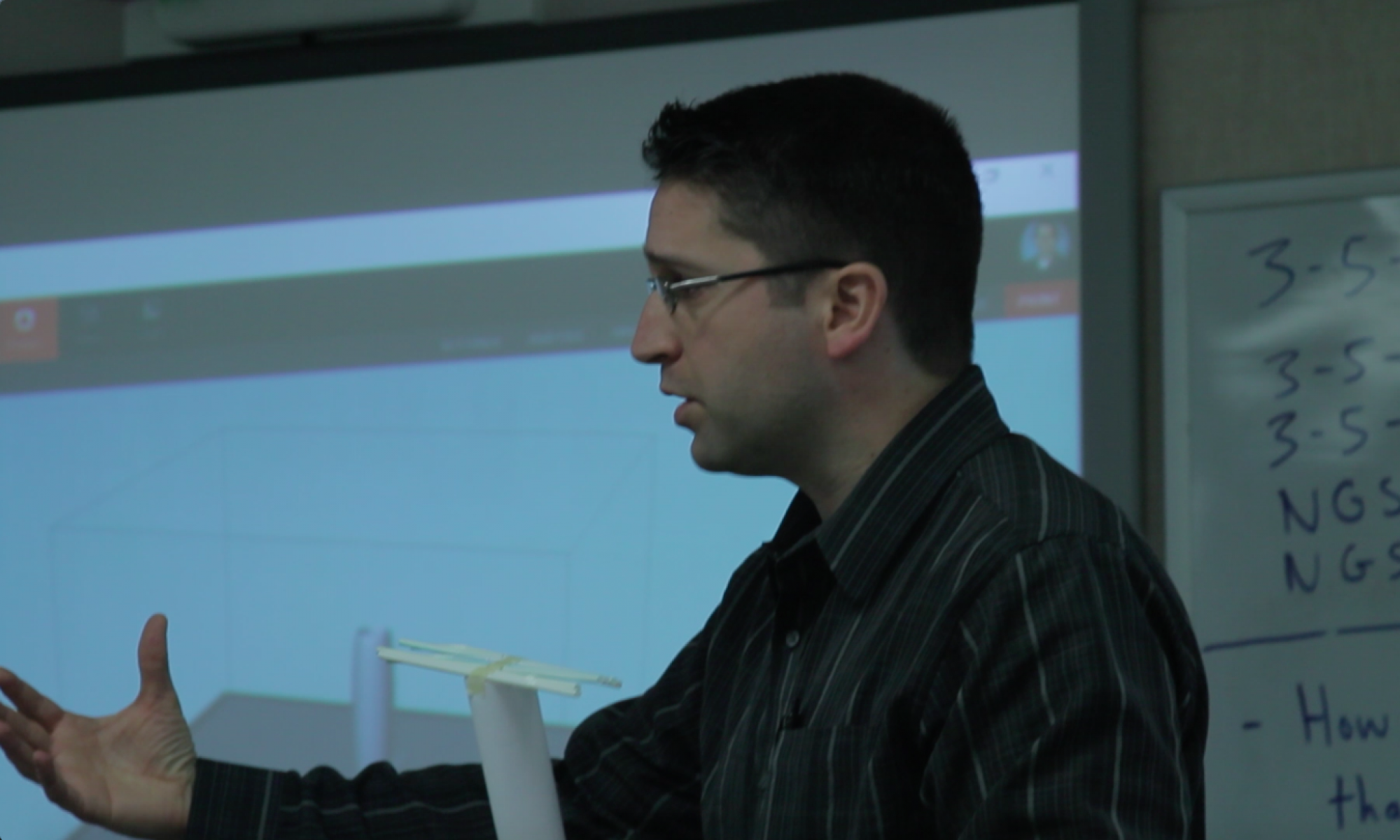
The ISTE Standards for Coaches 1b, “Facilitate equitable use of digital learning tools and content that meet the needs of each learner,” emphasized for me the importance of meeting the needs of each learner through equitable access to digital learning tools. The following blog excerpts highlight aspects of this learning touched on in each of the corresponding blogs.

Source: Digital Learning Mission Statement
Evidence: “Penultimately, my educational mission is to advance the work around closing opportunity and achievement gaps for all students with an emphasis on STEM education. This means my digital learning mission statement is built upon this premise. The current panopticon of STEM education in the American educational system is a mix of intentional and unintentional factors that limit participation by population groups outside of the male gender and Caucasian ethnicity. Women and minority populations are often excluded. While these exclusionary practices may be largely unintentional at this point in time, they are mostly a result of inadvertently perpetuated practices that at one time or another were intentional and ultimately developed into system of practices across societal structures.”
Explanation: This aspect of my educational mission statement speaks to the importance of facilitating equitable use of digital learning tools and content for every student.

Source: Digital Readiness Project
Evidence: “The heart of our work is preparing students for college and career readiness at Title 1 schools. This permeates all that we do at AVID. With this in mind, we seek to provide teachers with professional development training that empowers them to support their students along the K-12 continuum and advancing toward college and career. An important aspect of this is providing platform agnostic approaches and training. This means that teachers can take back the pedagogical practices and applications to their classrooms. In this way, teachers can utilize and apply as much as possible from our trainings to their unique educational context.”
Explanation: Title 1 schools by definition support low-income students and offer a targeted opportunity to improve equitable access to digital learning tools and content.

Source: Integrating Social Justice and STEM Pedagogy
Evidence: “Ensuring diversity of representation as we prepare all students for a future that doesn’t exist yet is important, and that future will be heavily dependent upon STEM understanding and applications. Someone who is “STEM literate” understands this and can apply that working knowledge in a variety of contexts and real-world situations. Overall, we need STEM literate workers to fill the employment gap while simultaneously addressing the wage gap. Just as important, we need STEM literate citizens that understand the consequences of their vote on issues such as climate change and genetic modification.”
Explanation: Our future global society depends upon a STEM-literate workforce and civically engaged population. This emphasizes the importance of providing equitable access to digital learning tools and content that meet the needs of each learner.

Source: Is Coaching Remotely Necessary in the Era of Remote Learning?
Evidence: “How does the why and what help us achieve the how of peer coaching in general? This question needs to at least be addressed concurrently if we are to explore how to potentially implement peer coaching online. According to research from Digital Promise, there is a strong correlation between peer instructional coaching and technology implementation and instructional integration. One question related to this is how does this technological connection translate to peer coaching that’s providing online. What does instructional coaching in the era of remote learning, and therefore remote teaching, mean for educators in need of additional support more than ever. The nature of effective professional development doesn’t change once everything related to school and education over all moves online, “When the program evaluators focused on one topic, technology integration, they found that 30 hours of collaboration produced increases in the teachers’ use of technology with students. More significant changes in comfort and use with students occurred when the coaches collaborated more than 40 hours (Cohen & Patterson, 2006).” This research quoted by Dr. Les Foltos makes clear the need for continued coaching support in an online environment.”
Explanation: Developing teacher efficacy with a new instructional technology tool requires 30-40 hours of coaching collaboration, and understanding this provides a means to equitable access to digital learning tools and content for all students.

Source: Teaching by Design, Part Uno
Evidence: “Universal Learning is a valuable approach to consider when looking at lesson planning because it means providing individualized access for students whether they have an Individualized Education Plan (IEP), 504, or not. In the Edutopia blog post entitled “Ensuring That Instruction Is Inclusive For Diverse Learners” by Nina Parrish, she speaks to the idea that Universal Design provides a flexible model for adjusting instructional approaches. She lists three key ideas for successfully implementing universal design in the classroom, “Teach content in many ways, provide choices to sustain student engagement, and provide accommodations for all students.” Universal Design creates a more student centered approach that is more inclusive across the entire classroom for all students.”
Explanation: In order to meet the needs of each learner through equitable access to digital learning tools and content, educators need to understand how to effectively meet each student’s individualized learning needs in the most effective way possible such as through Universal Learning and Universal Design.

1b Equitable use of digital learning tools
